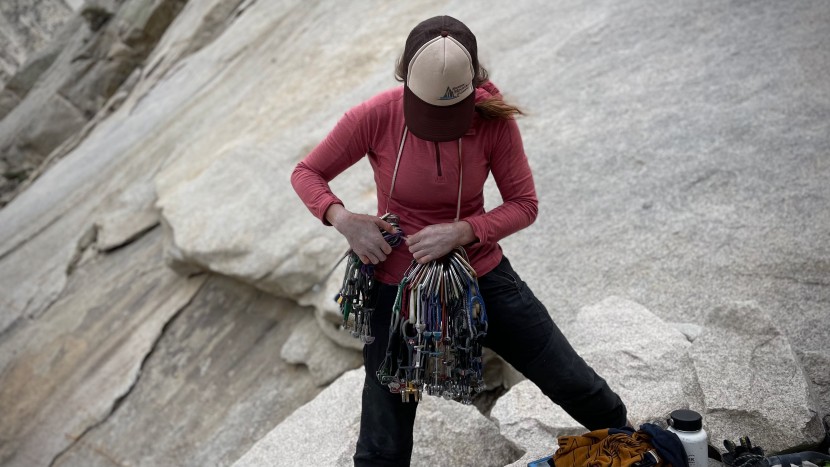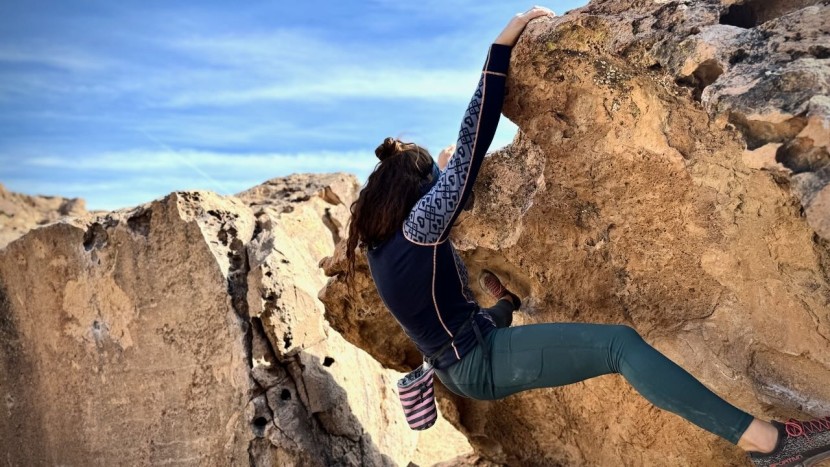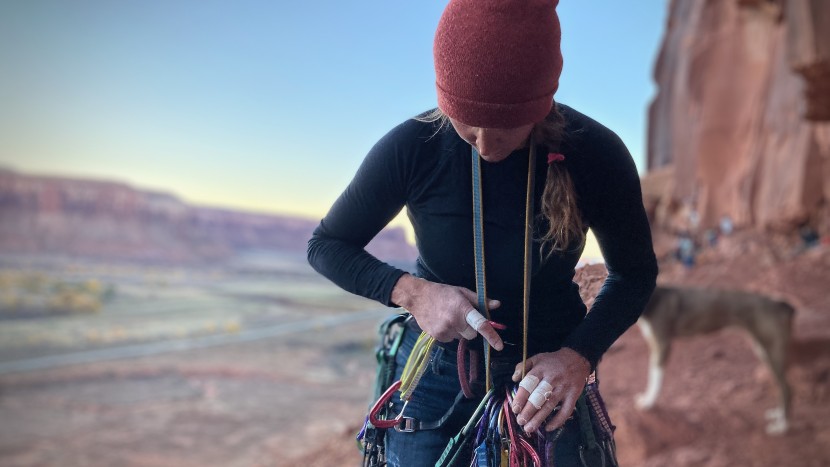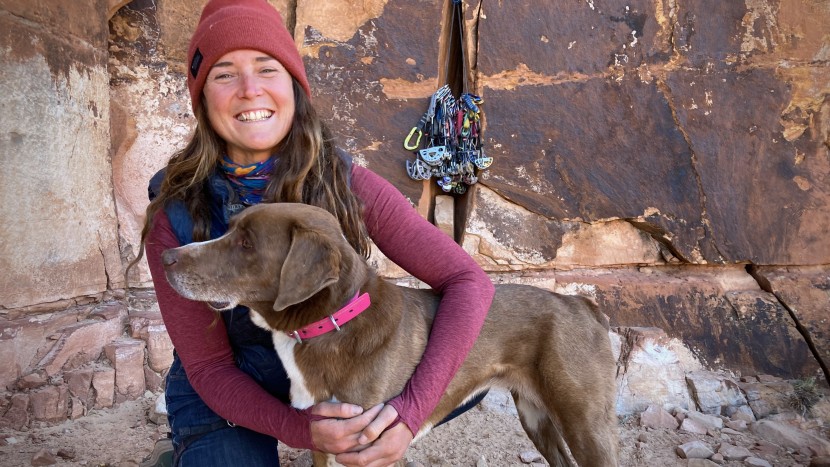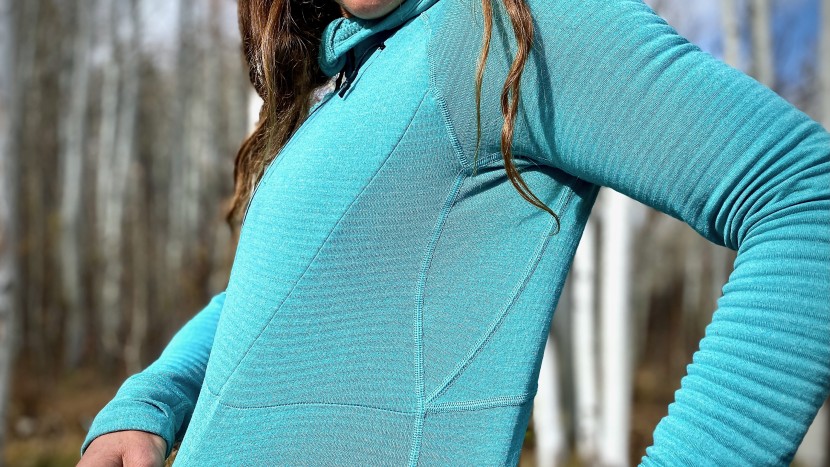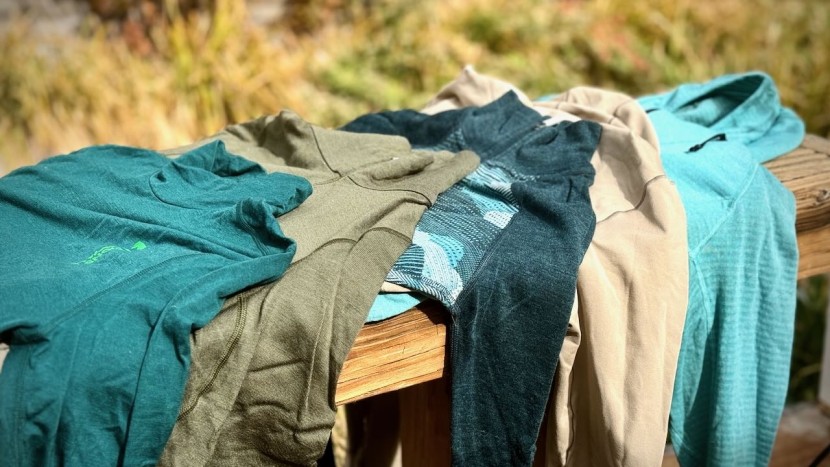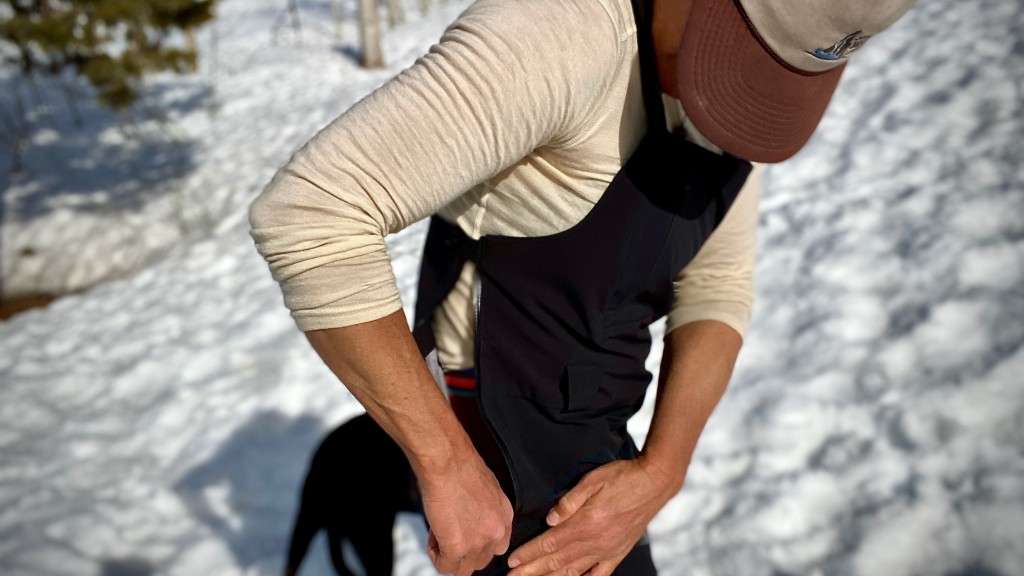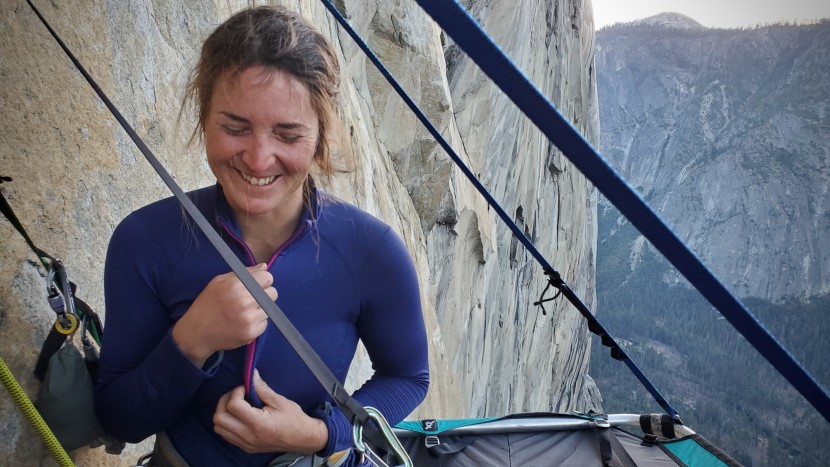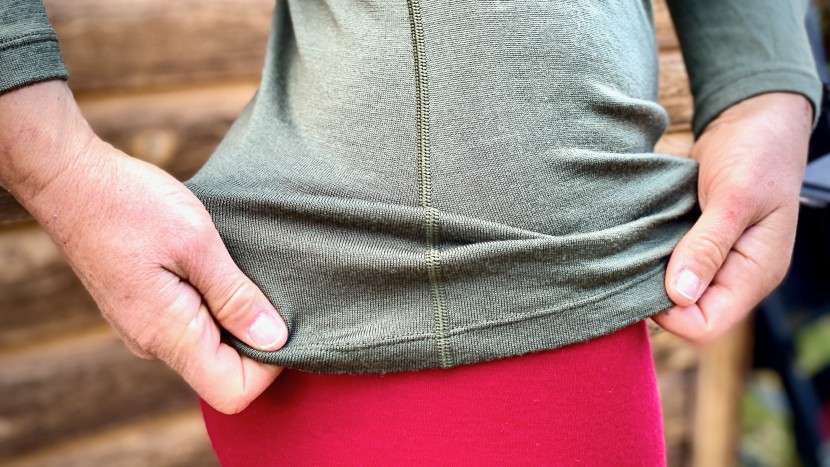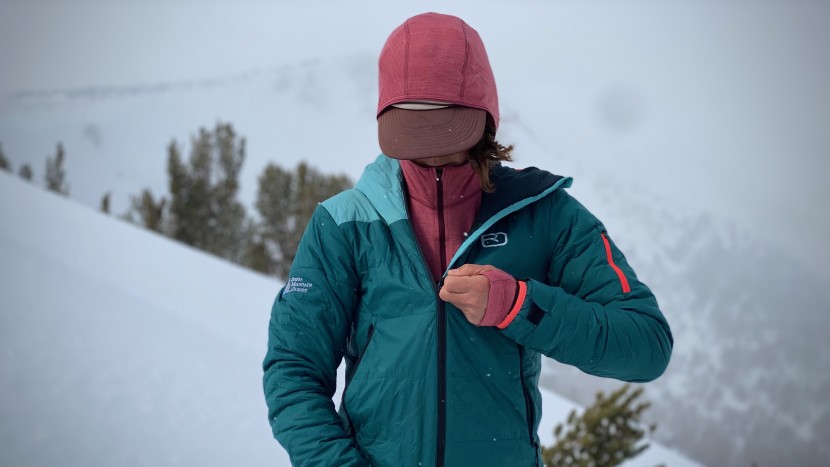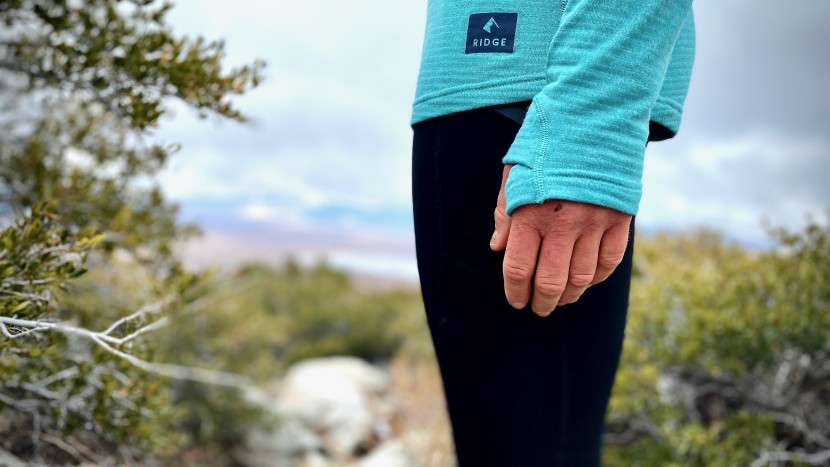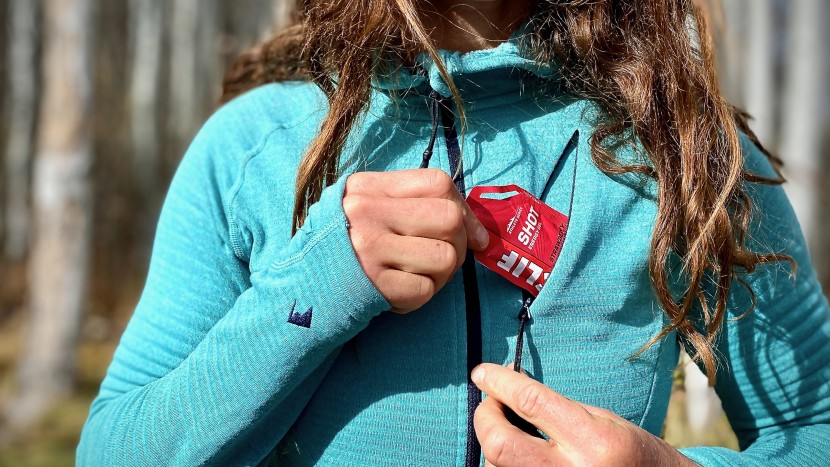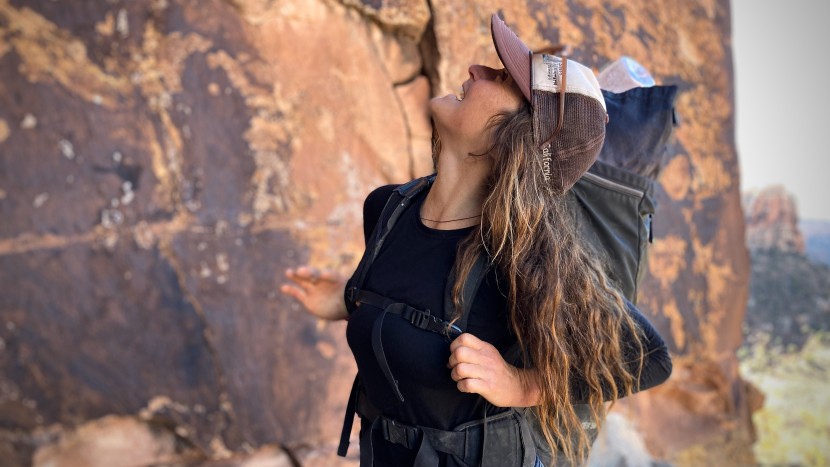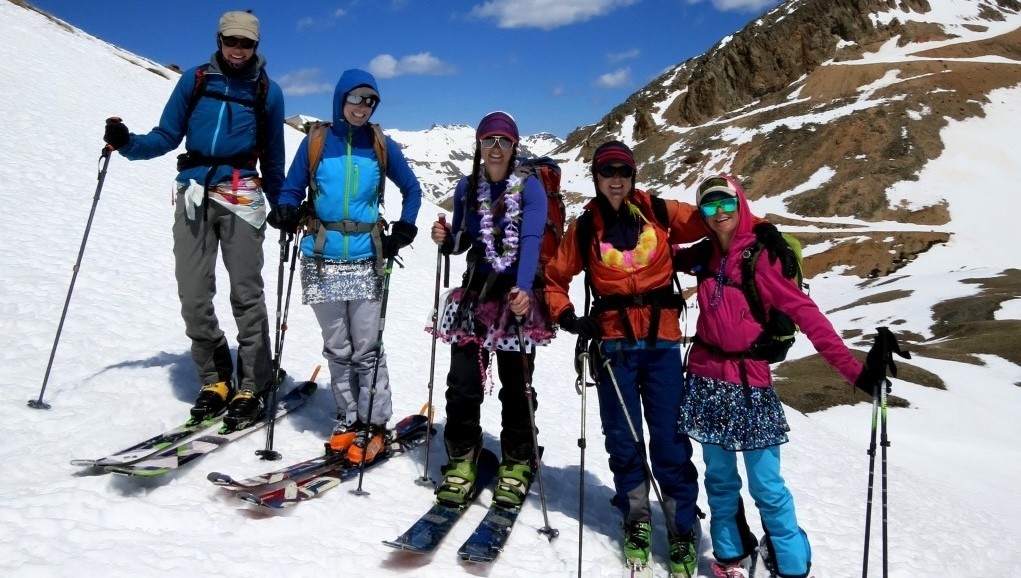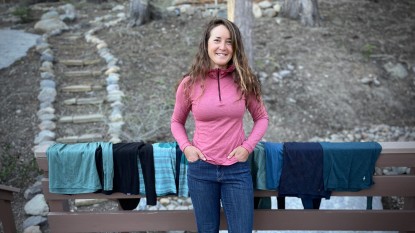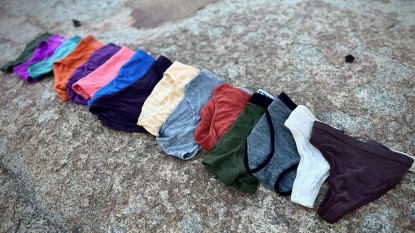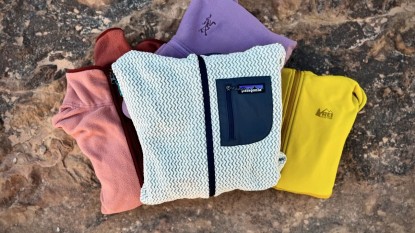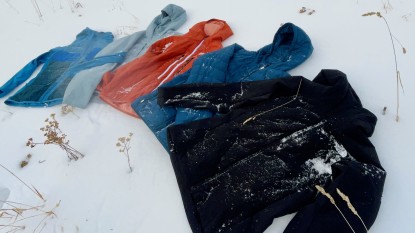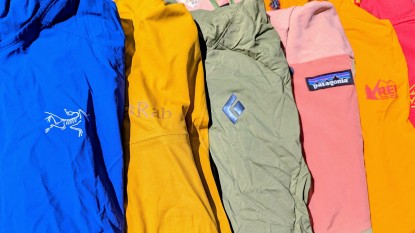A solid base layer top is one of the most important parts of your outdoor outfit. It's the layer that sits right next to your skin, underneath a mid-layer like a fleece, or further layered underneath a jacket or shell. Its biggest job is to keep moisture off of your skin while providing enough comfort that it's easy to wear from the ski hill to the chalet with relative ease. While many will wear these tops underneath layers in colder weather, they can also be worn as stand-alone pieces in warmer months. So what kind of base layer should you buy? In this article, we explore everything from budget to fabrics to fit and overall comfort. This guide will put you well on your way to finding the best base layer top to keep you looking good and safe from cold weather.
Budget
How much should you spend on a good base layer? A higher price doesn't necessarily dictate high performance, but a lot of the time, that trend is true. The base layers that typically perform the best are Merino wool, which can cost more than synthetic layers. Look at spending over one hundred dollars if you want the best of the best. You can also find great deals for less than that, but you'll probably miss out on some comforts and a fabric that thermoregulates well.
Fabric Types
Knowing your fabrics is probably the most important part of buying a good base layer. Make sure you do not buy a base layer made of cotton. Here, we discuss four different fabrics that you will come across: cotton, synthetics, wool, and wool-synthetic blends. We outline the pros and cons of them all.
Merino Wool
The outdoor industry has come a long way since the age of thick, heavy, and utterly itchy union suits that soldiers would wear on the front lines in the early 1900s. Thanks to a push for better technology, and the “ultra-fine” fibers of Merino, wool has evolved. It's not itchy, too hot, or heavy, and it is one the best temperature-regulating fabrics out there, making it great for all seasons. Not only that, but it also doesn't develop a long-term stink! Perfect for those long trips where you simply can't wash up.
Pros- Fantastic temperature regulation
- Natural fibers
- Easy Care
- The odor is not an issue
- Warm when wet
- Amazingly cozy on the skin
Cons
- Less durable (holes easily appear)
- Longer time to dry
- Absorbs more water
- Typically heavier in weight
- Typically more expensive than synthetics
- Some folks are allergic to this natural fiber
Synthetics
Garments constructed with synthetic fabrics are often either 100% polyester or a blend of synthetic materials such as lycra and nylon. While these garments are typically less expensive and quick to dry, they are often not as warm or cozy.
Pros- Quick to Dry
- Absorbs less water
- Durable fibers (doesn't stretch out)
- Often less expensive
- Easier to layer with smoother face fabrics
- Wicks well
Cons
- Sometimes stinky (even with odor control technology)
- Petrol-based fibers
- A smaller range of temperature regulation in comparison to Merino wool
- Moisture can linger in the fabrics
- Not as warm as Merino wool
Merino Wool-Synthetic Blend
We haven't reviewed a whole lot of these blends, but the new technology has proven to be pretty great in our experience. This fabric blend features both Merino wool and polyester materials. This high-performing material is excellent for a wide range of uses, offering the best of both worlds.
Pros- A range of temperature regulation comparable to merino wools
- Super cozy and comfortable
- More durable than 100% merino wool
- Amazing wicking power
- Quick to dry
- Warm
Cons
- Less durable than most synthetics
- Absorbent
Cotton
Cotton is widely used in the construction of cheap base layers because of its low cost. Those who aren't aware of how dangerous this can be in cold weather will typically buy them for themselves and their family. So we're here to offer some helpful suggestions for your next purchase.
While cotton is comfortable and breathes well in warm weather, it's dangerous when it's cold outside, especially if you're sweating. Being a highly absorbent material, it doesn't wick moisture away from your skin but rather holds moisture inside the material. When that moisture cools, it can also cool your core body temperature, thereby making you cold and vulnerable to conditions. You might even find your base layers freezing. If you get into severely cold and wet weather, the popular phrase “cotton kills” marches in…it can result in hypothermia or worse. As a result, please don't buy or depend on cotton for cold or wet weather.
Pros- Inexpensive
- Very breathable
- Feels nice on the skin when dry
- Easy care
- Fine around town
Cons
- Absorbs water
- Slow to dry
- Cold in the slightest bit of humidity or cold weather
Choose your Fabric Weight
What are the different fabric weights? There are four different fabric weights to consider when making your long underwear purchase.
Micro Lightweight
The lightest of them, this super fabric is meant to provide sun protection during the warmest season of the year. It is constructed of ultra-thin materials that are perfect for running in the warmer weather of spring, summer, and fall.
Lightweight
Perfect for warm weather that has a little nip in the air. This lightweight option is a tad warmer than the micro lightweight fabric and is ideal for year-round use when temperatures are warm. It's also an excellent option for warmer winter days, where you might find yourself hiking uphill for a few hours, or for colder nights where you have a few additional layers. If you run warm, this can be a great option; however, if you run cold, you may want to consider the following weight category.
Midweight
A versatile weight that is perfect for a plethora of uses. It will keep you warm with a proper layering system in winter storms well below negative digits. On warmer days, it can be worn on its own as a long-sleeve top, making this weight a perfect choice for year-round use.
Heavyweight
If you plan on hitting the coldest temperature on Earth, a heavy (or expeditionary) weight layer is best. Suited for frigid temperatures and frigid conditions, this layer is very thick and can be worn as an insulating shirt in cooler conditions. As a super warm base layer, it's not really functional for anything less than the coldest temperature out there unless you want to wear it on its own as a warm insulating top. They can also be useful for sedentary activities (ice-fishing, anyone?).
Fit and Style
You know that saying “fits like a glove?” Well, that applies here. Base layers are meant to fit close to the skin and shouldn't be too tight or too baggy. This enables effective wicking and warmth over time. Also, you want to make sure the arms and torso are long enough to cover all your skin. It shouldn't ride up while moving, and ideally, it's easy to layer underneath other layers. The takeaway? If the fit doesn't feel right, don't buy it.
Also, choose a style that you prefer. The most popular is crew cut, zip neck (with varying lengths of zipper), and hooded options. Crew cuts are a nice option as they don't have a collar and are fairly low profile, hiding easily beneath another layer. These are great for situations where you may not require additional neck coverage or if you have a variety of other layers already.
A zip neck offers a collar and a little more warmth (and ventilation), as well as protection from the elements by providing insulation to the neck. These are quite versatile, as they can be zipped up in colder weather or unzipped to release heat as temps warm or activity picks up. Different zipper lengths (½ zipper vs. ¼ zipper) offer access to layers you might stack underneath the base layer top. A hooded option is the warmest and by far the most protective. These are awesome tops if you plan on wearing it on its own or you don't already have a layer with a hood. While the hood can add more bulk to your layering system, our lead tester found that she and her friends preferred the added warmth and versatility that hooded layers offer.
Features
What features should you consider? Base layers come with a variety of added features. While some are super simple, others come loaded with thumb loops, hidden pockets, hoods, ventilation, and more.
Thumb Loops are nice to have because they create an anchor point for your sleeves. Some people love them, while other people hate them. Regardless, they are an excellent addition that makes the layer more versatile. When layering over other tops, you can slip your thumb into the loop to help pull down the fabric of the arms. Thumb loops can also add warmth to a base layer; some featured in this review cover most of the hand, which helps to keep the extremities a little warmer.
Pockets are sweet but can also add a little bulk. A little stash place for car keys, credit cards, or Kleenex is quite convenient while out on a jog around town. Our testers like them for long trail runs and skinning adventures in the mountains. Sometimes they are located in a hidden pocket on the hem, while other times, they might be found on the arm or breast.
UPF (Ultraviolet Protection Factor) might be another factor to consider when purchasing a base layer. If you plan on being in a super sunny spot, like a glacier or the desert, UPF might serve you well. Ultraviolet light can penetrate through most thin fabrics and can still cause some sun damage. So if you're interested in protecting your skin or you are sensitive to the sun, find a layer with a UPF factor of at least 40+.
Hoods are another feature to consider when looking at a base layer. Most don't come with a hood as they are intended to go beneath all your clothes and might add extra bulk; however, a hood can add warmth and versatility.
Conclusion
When considering the purchase of your next base layer top, consider what you demand in the performance of your top. What fabric type, weight, and features are right for you? Make sure the fit and style are exactly what you are looking for.


